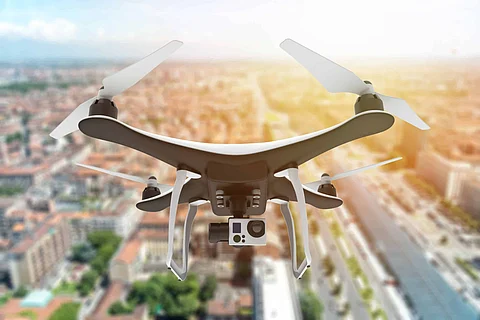
- Insights
- Cryptocurrencies
- Stocks
- White Papers
- Industry
- Geography
- Insights
- Cryptocurrencies
- Stocks
- White Papers
- Industry
- Geography


In today's world, drones have the power to propel a nation's economy to new heights. These flying robots can contribute to the economy of developing countries like India too. As the global leaders are scrambling on how to restart economy post-COVID-19, drones present a great opportunity here. Since the regulations regarding airspace management are becoming more relaxed and rounded, given adequate avenues of investments, India will be set to soar into a new form of growth and open new markets using these UAVs. But how true is it in reality?
At present, though India is one of the top countries among the drone importing nations, funding and innovation have dried up Indian drone startups. According to Inc42 DataLabs', research report, "Drone Technology: India Opportunity Report 2019", the total funding raised by drone startups in India from 2014 to 2018 was just US$16.56 million which accounts for a mere 2.26% of the total deep tech funding (US$732 million) in the same period. Meanwhile, our neighbor nation China ramped up its investments up to 14x more (US$239 million) than India during 2014-18. This raises an important question that is our nation conducive to the drone market.
Earlier Indian Government relied on the Chinese market to buy drones for its military and civilian applications. This because of the affordability of the drones of Chinese startups, which is low because of high investments in this market. Also, the Indian Government has imposed a strict ban on the use of UAVs in 2014. Fortunately, it realized its folly, and in October 2017, to support the growth of drone-based services, the Director-General of Civil Aviation (DGCA) first unveiled draft norms for the usage of Remotely Piloted Aircraft Systems (RPAS). This came into effect in December 2018.
After the announcement of this policy, a huge wave of excitement buzzed in the drone market and industry stakeholders (investors, end-consumers, startup community, and enterprises). This is because drones offer a plethora of use-cases like surveying and monitoring public and traffic to gathering precise spatial data that can help in India's smart city planning and administration. Local affiliates and startups are also using drones for agriculture, aerial surveillance of forests, film making, and many more. According to a study conducted by UnearthInsight, it is predicted that the market for commercial end-use of drones in India might hit the US$1 billion mark by 2020.
The primary reasons why India has a chance to dominate this industry are,
1. Willingness to try new technologies to address new challenges.
2. Increased awareness about the scope and potential of this technology. Awareness can foster engagement that, in turn, encourages adoption.
3. Presence of knowledgeable and highly-skilled workforce to can reap maximum profits from the drones. This shall also bring immense employment opportunities for the interested youth.
At the same time, drones are turning into B2B and B2C segments for higher scope and investments. E.g., Skylark Drones, a Bengaluru-based data analytics startup, has teamed up with Tata Steel to deploy drones at Tata's Noamundi iron ore mines in Jharkhand, for compliance reporting and monitoring volumetric production. Zomato, one of India's largest food-tech firms, has acquired TechEagle to deliver its promise of drone delivery in the country. These examples highlight that things are about to get favorable from the domestic drone industry and therefore drive its growth and R&D investments.
